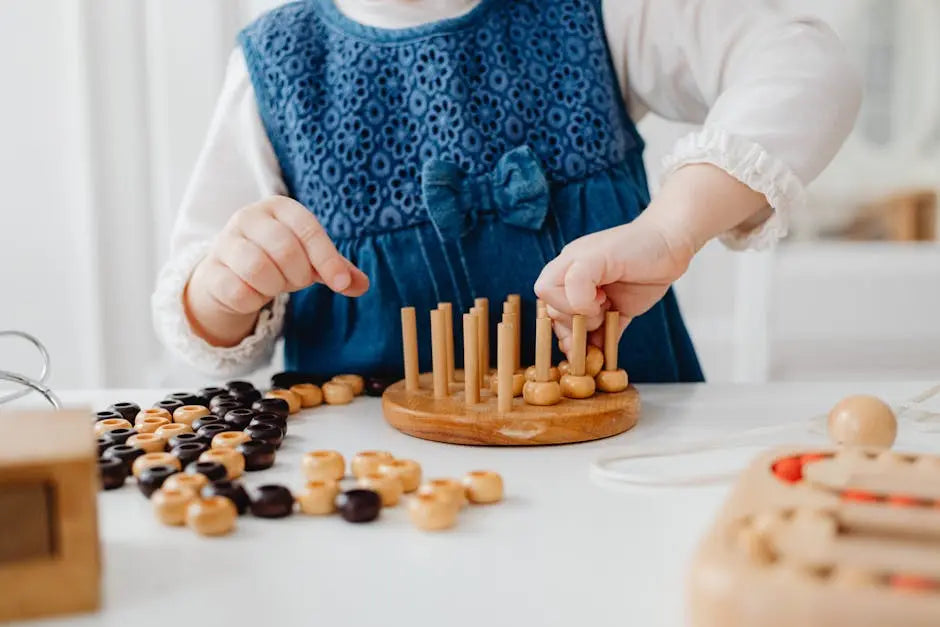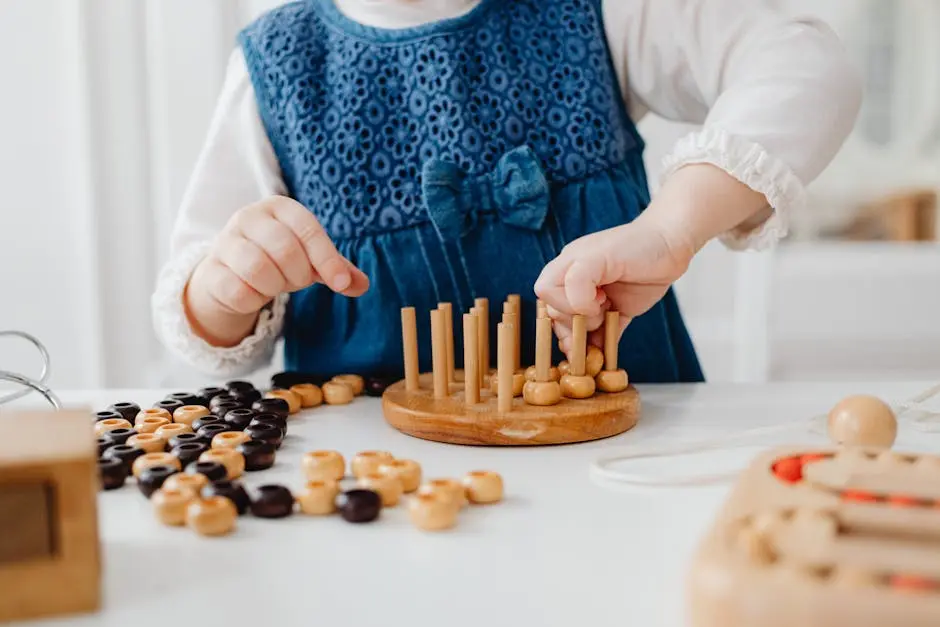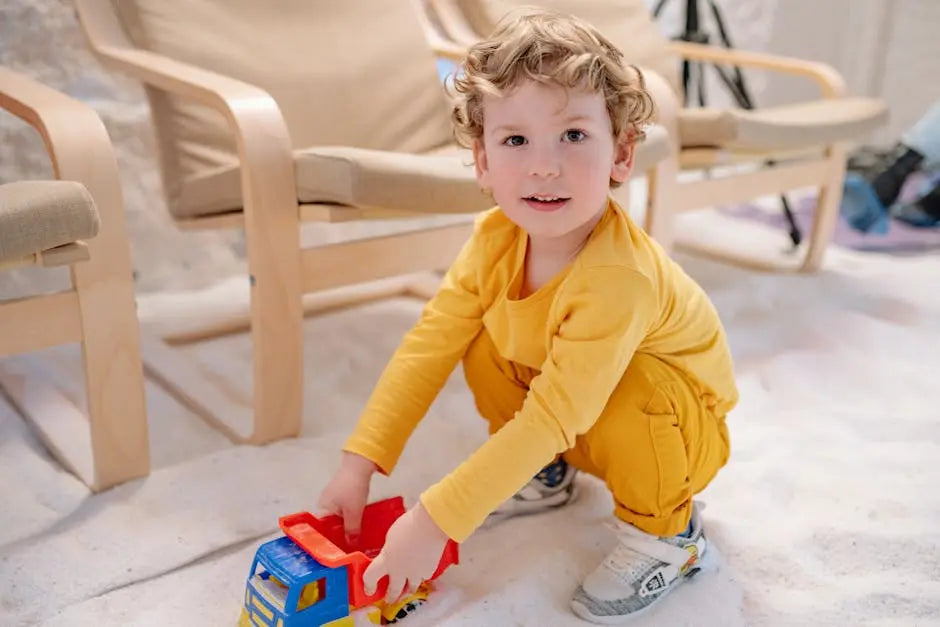In today’s world, where playtime and learning often go hand in hand, interactive toys for toddlers have become a focal point for parents seeking to enrich their child’s early development. These toys not only captivate young minds but also foster essential skills that pave the way for lifelong learning. In this blog, we will explore the exciting world of interactive toys and how they contribute to a child’s growth and development.
What Are Interactive Toys?
Interactive toys are designed to engage toddlers in an active learning process through play. They encourage curiosity and exploration, providing sensory experiences that captivate young children.
At their core, interactive toys invite children to touch, listen, and create, making them more than just toys—they become gateways to understanding the world around them. For instance, a toy that makes sounds when pressed can introduce basic cause-and-effect relationships. Simple actions lead to delightful reactions, allowing toddlers to make connections between their actions and the outcomes. What’s truly fascinating is how these toys adapt to a child’s growing abilities, ensuring that they remain engaging as your child develops.
Another important aspect of interactive toys is their ability to foster social engagement. When children play with these toys together, they learn to communicate, collaborate, and share. This social interaction is vital for developing emotional intelligence and understanding social cues. Whether it’s stacking blocks, solving puzzles, or playing a musical game, interactive toys are often the catalyst for friendships. They provide the perfect platform for toddlers to practice essential life skills while having fun.
The Benefits of Interactive Toys for Toddler Development
These toys promote cognitive skills, language development, and motor skills. They also enhance problem-solving abilities and promote creativity, making them an invaluable part of early childhood education.
The benefits of interactive toys extend far beyond mere entertainment. Engaging with these toys can stimulate brain development and improve concentration. When toddlers interact with toys that require them to follow instructions or remember sequences, they’re effectively exercising their memory and attention span. As they figure out how to navigate these challenges, they naturally become more adept at facing similar tasks in real life, be it in the classroom or social settings.
Moreover, many interactive toys encourage language development by promoting communication skills. Toys that incorporate songs, sounds, or even simple phrases can introduce toddlers to new vocabulary. This interaction invites parents or caregivers to join in on the fun, fostering a dialogue that nurtures language skills. Through playful repetition and engagement, children pick up words and phrases almost effortlessly. Thus, what begins as play can evolve into an enriching learning experience.
Additionally, interactive toys help children develop fine motor skills through activities like stacking, pulling, or pressing various buttons. These skills are foundational for tasks they will encounter later in life, such as writing or using tools. As toddlers use their hands to manipulate toys, they strengthen important muscle groups and improve hand-eye coordination. This physical aspect of learning is essential, and the joy of play enhances the likelihood of kids wanting to engage in these beneficial activities.
Types of Interactive Toys to Consider
From electronic learning devices to classic building blocks, there is a wide range of interactive toys available. Each type offers unique advantages that cater to different aspects of a toddler’s development.
One popular category includes educational tablets specifically designed for young children. These devices often come loaded with games that teach letters, numbers, and even basic problem-solving skills through fun, interactive methods. Aligned with various educational standards, they are an excellent supplement to traditional learning. However, moderation is key; it’s essential to ensure screen time doesn’t overshadow hands-on play.
Classic toys, like building blocks, offer endless opportunities for creativity and exploration. Toddlers can stack, sort, and build whatever their imaginations conjure up. Not only do these toys encourage creativity, but they also help develop spatial awareness and problem-solving skills as children experiment with balance and structure. These simple materials often create more lasting satisfaction than electronic counterparts, as they foster creativity unfettered by screens.
Musical toys are also fantastic interactive options. Instruments designed for toddlers can introduce rhythm, melody, and even basic concepts of music theory. Playing with these toys not only enhances auditory skills but also cultivates a sense of timing and motor coordination. Moreover, they are a great way to foster a love for music from an early age, which can lead to broader cognitive benefits down the line.
How to Choose the Right Interactive Toy for Your Toddler
When selecting interactive toys, consider the age, interests, and developmental milestones of your child. It’s crucial to choose toys that are safe and suited to your toddler’s capabilities to maximize their learning potential.
To begin with, always check the age recommendations provided by the manufacturer. These guidelines are put in place to ensure that the toy aligns with your child’s developmental stage. A toy that is far too advanced may lead to frustration, while one that is too simplistic might not hold their interest. Striking that balance is key for fostering engagement and promoting learning without overwhelming your child.
Don’t forget to take your toddler’s interests into account as well. If they have a fascination with animals, consider toys that incorporate animal sounds or facts. If they enjoy art, look for interactive toys that allow them to draw or color digitally. By aligning toys with their passions, you spark their imaginations while enhancing their learning experiences. This targeted approach often leads to deeper engagement and longer periods of playtime.
Remember, safety plays a critical role in your selection process. Always inspect the materials and small parts of any toy, as toddlers are prone to exploring items by putting them in their mouths. Look for other safety features like rounded edges and durable construction to avoid any potential hazards. A toy that meets these criteria can provide peace of mind while allowing your little one to explore their world joyfully.
The Role of Parents in Playtime with Interactive Toys
Parents play a vital role in facilitating playtime with interactive toys. Engaging with toddlers during play can enhance the learning experience and help develop a strong emotional bond.
When parents actively participate in play, it’s not just about supervision; it’s about connection. By getting down on the floor and exploring together, parents demonstrate that learning is a shared journey, one filled with joy and discovery. This active involvement can turn a simple stacking game into an opportunity to learn about colors and shapes, while also creating cherished memories that strengthen family ties.
Moreover, parents can enrich the playtime experience by asking open-ended questions. Instead of merely prompting “What color is this?” they can ask “What do you think will happen if we stack these blocks this way?” Such questions encourage critical thinking and problem-solving. They invite toddlers to express their thoughts and ideas, developing confidence in their opinions and fostering a love for inquiry.
Lastly, embracing moments of failure during play is equally important. When a toddler struggles with a task, instead of rushing in to correct them, parents can take a step back, offering support without interference. This approach teaches resilience; it sends the message that it’s okay not to succeed immediately and that perseverance is part of the learning process. Such moments can be transformative, reinforcing the idea that play—and learning—are lifelong journeys.
The Importance of Integrating Play and Learning
Interactive toys for toddlers bridge the gap between entertainment and education effectively, making learning a delightful experience. By incorporating these innovative tools into playtime, parents can help their children build foundational skills while having fun.
Choosing the right interactive toys can significantly enhance cognitive abilities, social skills, and fine motor development, ensuring that the little ones grow into well-rounded individuals.




Dejar un comentario
Este sitio está protegido por hCaptcha y se aplican la Política de privacidad de hCaptcha y los Términos del servicio.